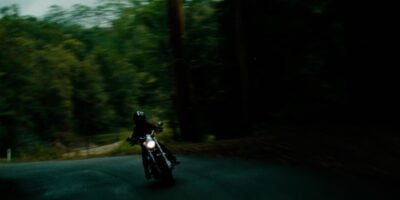I couldn’t believe it. Trixie Mattel in the Hall of Fame and fans are calling it rigga morris? Who would have thought that the fan favourite taking the crown would be the real gag of the season?
If that didn’t make much sense to you, let me backtrack a little. For the uninitiated: I’m referring to the third ‘All Stars’ season of RuPaul’s Drag Race, a reality show about drag queens that’s a little bit America’s Next Top Model, a little bit Project Runway, and a lot its own thing. All Stars reunites contestants from earlier seasons – the tenth regular season has just begun – and going into the latest All Stars, Trixie Mattel was the clear favourite to take the crown.
Despite underperforming in the show’s seventh season, she’s won plenty of fans since – Drag Race is the rare reality show where onscreen popularity translates to off-screen success – as a sharp-tongued comedian and as the co-host of the Trixie And Katya Show (screening here on Viceland). With an incredibly distinctive look – tonnes of makeup, plenty of pink – seeing her walk away with the grand prize of $100,000 and a spot in a Photoshopped, non-existent Hall of Fame isn’t in and of itself surprising.
RuPaul’s Drag Race is a reality show about drag queens that’s a little bit America’s Next Top Model, a little bit Project Runway, and a lot its own thing.
To understand the surprise, you only need to watch the season. Trixie was overshadowed first by Seattle queen BenDeLaCreme, who firmed quickly as a frontrunner, and then – after Ben sensationally eliminated herself at the season’s midpoint – veteran Drag Race competitor Shangela. It’s more than that, though. Reality shows are all about last minute upsets; you can’t keep fans’ attention if the obvious frontrunner wins every time, so countless shows are engineered and edited to produce unexpected outcomes.
All Stars 3 was a little different, in that Trixie’s win felt transparently like the outcome of producer meddling. Drag Race – always at least partly operating as a parody of similar reality shows – folded Survivor into its DNA with the final episode, bringing back eliminated All Stars contestants to vote on which two competitors deserved to lip sync for the title.
I don’t intend to offer a post-mortem of this decision. I’d only reach the same conclusion everyone else has: this ‘jury’ came across as a clumsy way to disadvantage the season’s frontrunner(s) and inject drama into the proceedings; it might have worked, but not when sprung on the contestants without prior warning. I don’t want to talk about Trixie Mattel, either. What I do want to talk about are the two queens who could – and perhaps should – have won the season, and how BenDeLaCreme’s and Shangela’s approach to the show tells us a lot about performance both within and without the context of reality television.
Love Film & TV?
Get your daily dose of everything happening in music, film and TV in Australia and abroad.
Shangela and BenDeLaCreme each represented different ways of playing the reality show game
The story of Shangela is, in many ways, the story of how Drag Race became the show it is today. Long before she was – if Reddit and the live viewing I attended were anything to go by – the fan’s preferred AS3 winner, she was a scrappy young queen with a few months experience in the show’s second season, back in 2010. Despite being eliminated in the very first episode, she made enough of a mark to be invited back for season three.
It’s in that season that Shangela lay the groundwork for Drag Race queens and Drag Race itself. Shangela came to play with pre-prepared branding – a catchphrase (“Halleloo!”) and a corn gimmick – that could be easily slapped on merchandise after the show. She parlayed her talents into other arenas, too, subsequently acting in the likes of Community, Terriers and The X-Files reboot. But most importantly, Shangela ensured that Drag Race remained entertaining. She delivered entertaining confessionals – guaranteeing herself screen time – and made every effort to tap into reality show fuel: “conflama” (conflict and drama) by turning even the gentlest slight into a full-bore fight.
Shangela didn’t win her season. She was still a young queen, ill-equipped for season three’s frequent sewing challenges. But she proved more influential on the show than I think she’s given credit for. Before Shangela, the show had its share of fights – Tatianna vs Tyra, Mystique vs Morgan, everyone vs Rebecca – but never found the kind of seasons-long narrative (Heathers vs Boogers) that she helped sustain.
Post-season three, the show’s producers went out of their way to cultivate emergent drama into ongoing storylines that could maintain fan interest through weaker episodes. Season four was defined by a fight between alternative goth queen (and eventual winner) Sharon Needles and “tired-ass showgirl” Phi Phi O’Hara. This was more than a short-lived reality show scrap; this was a stage for a showdown between different eras of drag aesthetics, and the producers made sure to weave this storyline through every episode. In subsequent seasons, queens were chosen specifically to promote such conflict, whether it was Alyssa Edwards and Coco Montrese in season five, ex-Idol contestants Courtney Act and Adore Delano in season six, or ‘twins’ Aquaria and Miz Cracker in the show’s latest season.
There’s no denying that this sort of meddling has made for great television. But, inevitably, valuing stories over success has its victims. Queens are either shunted into a villain role because it’s better TV, or are dismissed because they don’t present an engaging narrative. I’d argue that, one of the more prominent victims of this approach was BenDeLaCreme. In her season – the sixth – she was clearly one of the more talented queens (though undeniably overshadowed by perhaps the show’s most successful competitor, Bianca Del Rio), but her star waned as the season progressed.
Essentially, Ben wasn’t built for reality TV. Her persona is – in her own words – “terminally delightful.” She didn’t have a tragic backstory, and she wasn’t interested in picking fights with other competitors. When another queen – Darienne Lake – took umbrage at Ben’s success and perceived arrogance, a possible plotline presented itself. Producers jumped on the opportunity, constructing a (largely one-sided, mostly artificial) enmity between the two queens that culminated in Ben’s elimination after losing a lip sync to Darienne. It was a capper to a storyline built around Ben, at her expense.
Shangela and BenDeLaCreme each represented different ways of playing the reality show game. Shangela profited by offering editors plenty of entertaining options to motivate producers to keep her around as long as possible, while Ben suffered from her inability to engage with the nastier undercurrents of the genre.
Which brings us to All Stars 3. Both queens turned up playing essentially the same game as in their original seasons: Shangela doing her best to make mischief, Ben endeavouring to keep everyone happy. But the game had changed. Unlike normal Drag Race, where queens are eliminated at RuPaul’s discretion, the All Stars model gives the elimination power to each week’s winner. That was perfect for Shangela – who immediately set about attempting to forge alliances – but when Ben proceeded to win an unprecedented streak of challenges, the pressures of kicking out other queens began to overwhelm her.
At the time, Ben’s choice to eliminate herself at the climax of the show’s sixth episode – after winning five (!) of the six preceding challenges – was shocking. But given how the season ended, her decision looks very smart. Where Shangela expected (understandably) to be rewarded for offering entertaining television, Ben intuitively understood Drag Race’s need for escalation. The previous season of All Stars, while well-received, had been criticised for the seeming inevitability of Alaska’s win. What would be more dramatic that cutting down the frontrunner at the final hurdle? Instead of waiting to be dispatched, Ben chose to leave on her own terms; she took a lesson from Shangela and created the drama herself.
Shangela was left in the lurch. The aforementioned jury twist was only ever going to punish the frontrunner – after all, Shangela had herself eliminated many of the queens in the jury. Despite doing her damnedest to up the conflama quotient, Shangela herself sacrificed at the altar of television and its ravenous need for one more big surprise.
RuPaul’s Drag Race may, ultimately, be a bit of trifling entertainment, but the respective paths of Shangela and Ben are demonstrative of the challenges of resisting a system from within.
The whole season of All Stars 3 turned out to be a lesson in the dangers of trying to exploit a system from within. Back in season three, Shangela’s unending quest for conflict kept her in contention and helped establish her thriving career thereafter. But that was almost a decade ago; in 2018, playing into the producer’s hands isn’t enough. None of this is to say that Trixie didn’t deserve her win! But the circumstances of the finale – where Shangela wasn’t even granted the opportunity to lip sync for the crown – were unmistakably designed to surprise audiences, and thus get the kind of social media outrage that ultimately attracts more eyeballs.
The lessons here go beyond how reality shows coax their contestants in performing certain roles before betraying them. As BenDeLaCreme said in a Facebook post after the finale aired: “Stop accepting what “authority figures” have told you you have to do.” RuPaul’s Drag Race may, ultimately, be a bit of trifling entertainment, but the respective paths of Shangela and Ben are demonstrative of the challenges of resisting a system from within. When we play by the rules – even if we bend them to our will – we’re still subject to those rules. To succeed on your own terms, you need to question and, where necessary, explicitly reject those rules. If nothing else, it makes for great television.


































